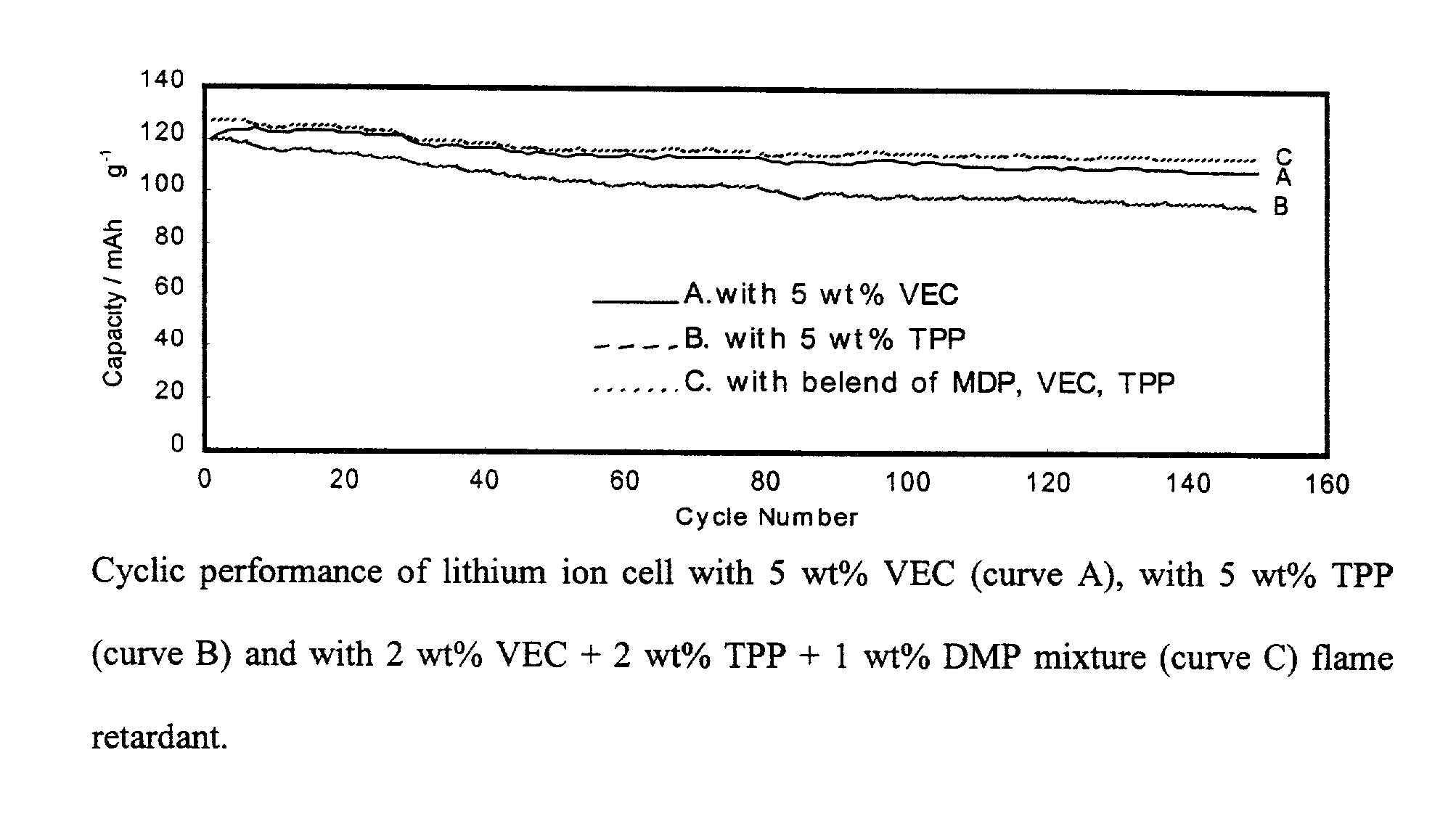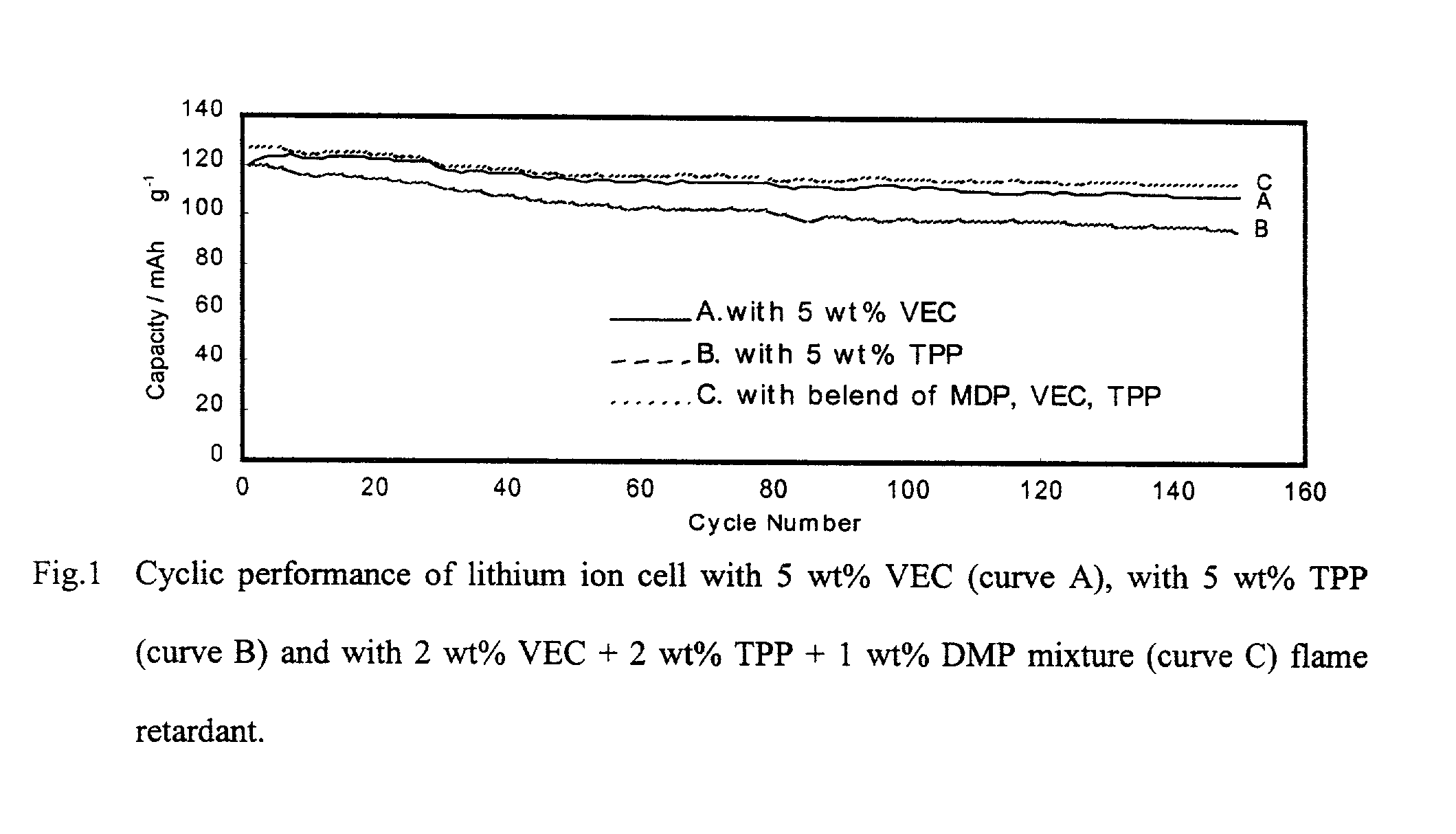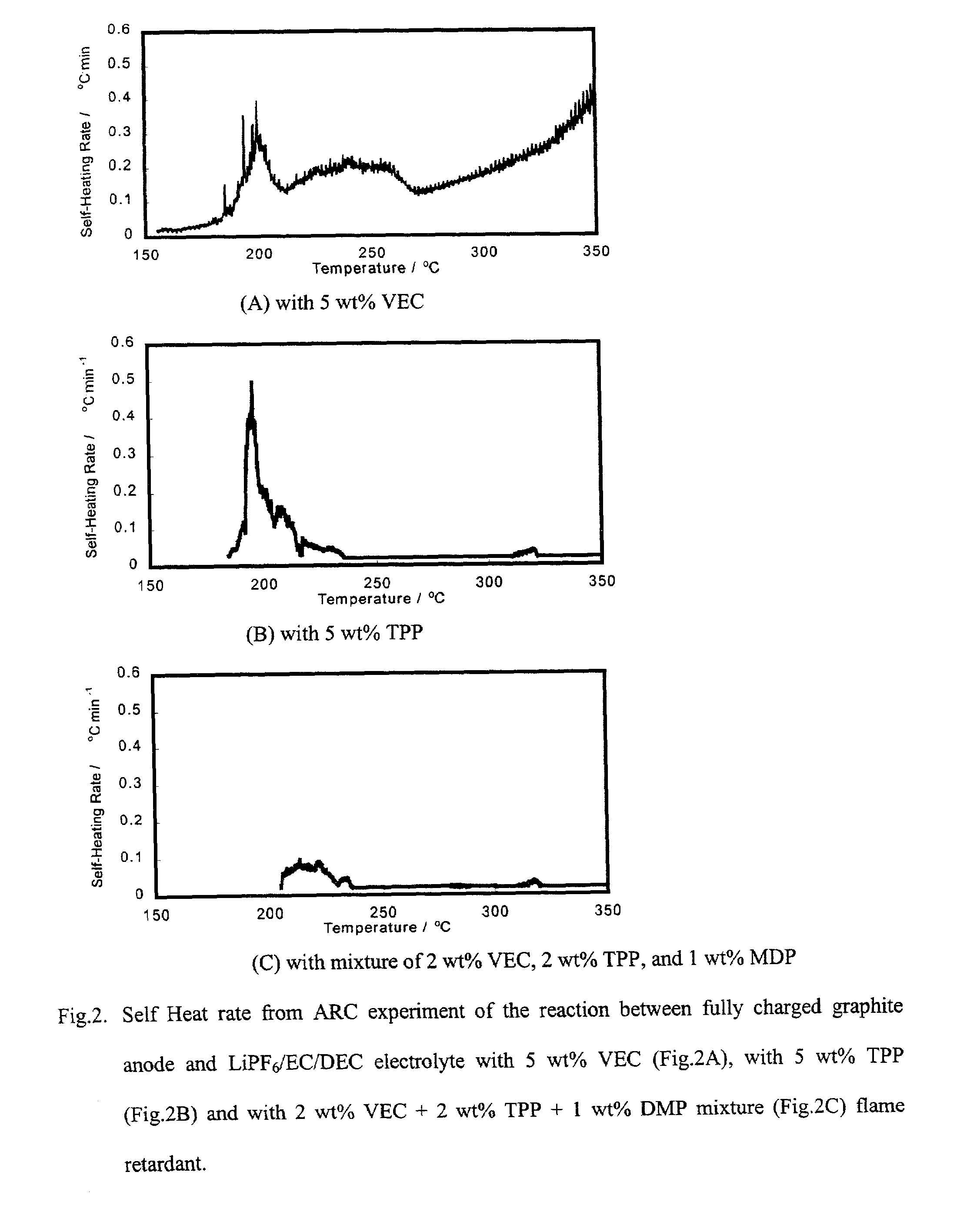Lithium ion battery with improved safety
- Summary
- Abstract
- Description
- Claims
- Application Information
AI Technical Summary
Benefits of technology
Problems solved by technology
Method used
Image
Examples
Embodiment Construction
[0017]Coin type (2.5 mAh) and prismatic type (180 mAh) lithium ion cells were fabricated and tested to evaluate cycle life characteristics of lithium ion cells that contain fire-retardant and electrolyte additives.
[0018]The invention includes non-aqueous electrochemical lithium cells and batteries containing such electrodes when synthesized according to the invention. A representation of such a cell is shown schematically in FIG. 7, the cell represented by the numeral 10 having a negative electrode 12 separated from a positive electrode 16 by an electrolyte 14, all contained in an insulating housing 18 with suitable terminals (not shown) being provided in electronic contact with the negative electrode 12 and the positive electrode 16. Binders, solvents and other materials normally associated with both the electrolyte and the negative and positive electrodes are well known in the art and are not described herein, but are included as is understood by those of ordinary skill in this ar...
PUM
 Login to View More
Login to View More Abstract
Description
Claims
Application Information
 Login to View More
Login to View More - R&D
- Intellectual Property
- Life Sciences
- Materials
- Tech Scout
- Unparalleled Data Quality
- Higher Quality Content
- 60% Fewer Hallucinations
Browse by: Latest US Patents, China's latest patents, Technical Efficacy Thesaurus, Application Domain, Technology Topic, Popular Technical Reports.
© 2025 PatSnap. All rights reserved.Legal|Privacy policy|Modern Slavery Act Transparency Statement|Sitemap|About US| Contact US: help@patsnap.com



